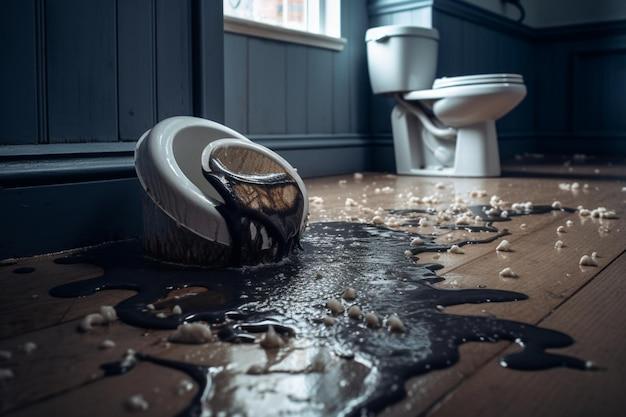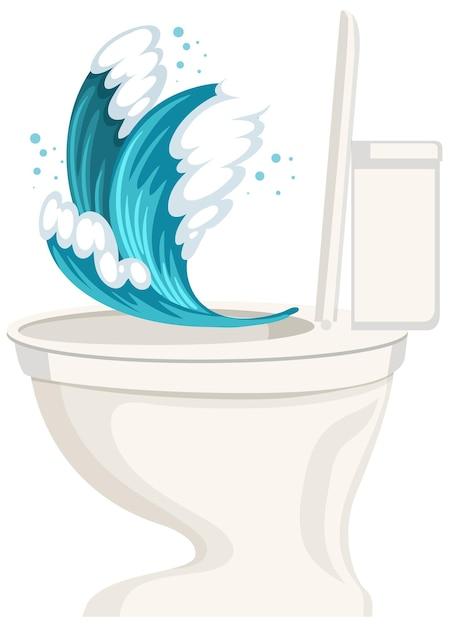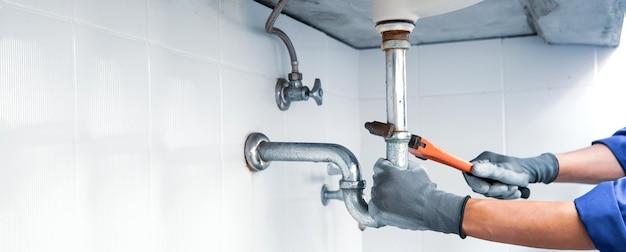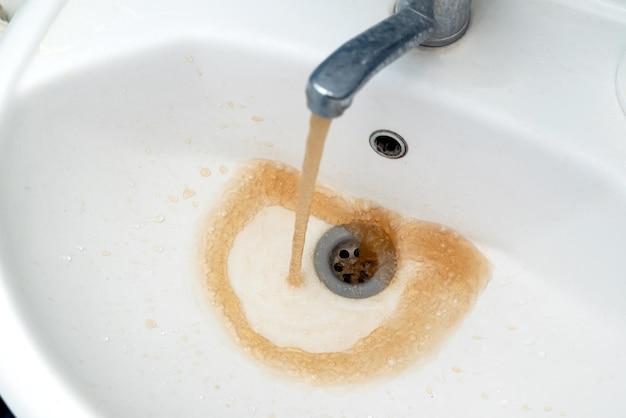Are you tired of dealing with water leakage in your bathroom? Do you constantly find yourself mopping up water after every shower? Bathroom water leakage is a common problem that can damage your walls, floors, and lead to mold growth.
The most common type of bathroom water leakage is through the walls and ceilings. It’s essential to have the right tools and knowledge to detect the source of the leak to prevent costly damage to your bathroom.
Finding the source of water leakage in your bathroom can be a daunting task, but it’s not impossible. Sometimes the most obvious source may not be the actual culprit. Our bathroom leakage solution guide will provide you with the necessary information to track the source of the leakage.
Stopping water leakage from bathroom tiles is a nightmare for most homeowners. The process often involves removing tiles and creating a mess. However, with our guide, you’ll learn how to waterproof your bathroom without removing tiles.
We understand that fixing a bathroom leak can be expensive, and sometimes you just don’t have the resources to cover the costs. That’s why we’ve included some tips on how to fix a bathroom leak without removing tiles.
In conclusion, our Bathroom Water Leakage Solution guide is designed to help you understand and solve water leakage problems in your bathroom. With our tips, you’ll save time and money by detecting the source of the leak, waterproofing your bathroom without removing tiles, and fixing leaks without breaking the bank. Get ready to say goodbye to bathroom water leakage and hello to a dry and cozy bathroom.
Best Bathroom Water Leakage Solutions
Water leakage in your bathroom is a nightmare, and it can be expensive to fix if it’s not resolved quickly. Here are some of the best solutions for preventing bathroom water leakage.
1. Regular Inspection
You should regularly inspect your bathroom to check for any signs of water leakage. Keep an eye on the walls, ceilings, and floors to see if there are any noticeable damp patches or water stains. You can also feel the tiles to see if they’re loose or if the grout has any gaps. If you find any signs of a leak, call a plumber to fix the issue as soon as possible.
2. Caulk Maintenance
Caulk is the material that fills the gaps between the bathtub or shower and the wall tiles. Over time, caulk can shrink, crack, or pull away from the surfaces it’s meant to seal. If there’s any damage, you’ll have to remove the old caulk and apply new caulk to prevent any water leakage.
3. Proper Ventilation
Your bathroom needs proper ventilation to reduce the amount of moisture in the air that can lead to dampness and mold growth. Make sure that your bathroom has an exhaust fan or a window that you can open to let fresh air circulate.
4. Waterproofing
Waterproofing your bathroom is an excellent solution for preventing water leakage. You should use waterproofing materials that can seal the gaps and cracks in your bathroom, such as waterproof paint, membranes, and sealants. If you’re not sure how to waterproof your bathroom, contact a professional to do it for you.
5. Professional Plumbing Inspection
If you’re experiencing frequent water leakage in your bathroom, it might be time to call in a professional plumber to inspect your pipes. A professional plumber will identify any leaks in your plumbing system, replace any damaged pipes, and provide a long-lasting solution to prevent future water leakage.
In conclusion, preventing water leakage is essential to avoid costly repairs. Regular inspection, caulk maintenance, proper ventilation, waterproofing, and professional plumbing inspection are all excellent solutions for preventing water leakage. By following these tips, you can ensure a leak-free bathroom for years to come.
Bathroom Wall Leakage Solution
If your bathroom walls are constantly wet and damp, it’s time to figure out a bathroom wall leakage solution. The water leakage can cause mold growth and damage to the walls and floors. Here are some tips on how to deal with bathroom wall leakage.
Check for Leakage Points
The first step in fixing a bathroom wall leakage is to identify where the water is coming from. Check for cracks, holes, and missing grout in the tile wall, faucet, and showerheads. Often, water leakage in the bathroom walls is due to faulty installation of tiles or the shower diverter.
Waterproofing
Once you’ve identified the leakage points, you need to waterproof your wall. You can use a variety of waterproofing solutions such as silicone sealant, waterproofing membrane, and waterproof coat to seal the holes and cracks. However, the best solution is to opt for a waterproof tile adhesive as it creates a waterproof barrier between the walls and tiles.
Replace Wallboard
Sometimes, the leakage is so bad that the wallboard itself is damaged beyond repair. In such cases, you’ll need to replace the entire wallboard. Cut a section of the damaged wallboard and remove it along with the insulation behind it. Now, install a new wallboard and insulation. Apply a waterproofing membrane, and ensure you seal the tiles to the wallboard with a waterproof tile adhesive.
Call a Professional
If you’re unsure of how to go about fixing a bathroom wall leakage, it’s best to call in a professional. A certified plumber or a contractor can assess the issue and identify the best solution for you.
By following these tips, you can fix a bathroom wall leakage and prevent the growth of mold and damage to your bathroom walls. Keep in mind that prevention is better than cure, so make sure to check for any leakage points regularly.
Common Bathroom Water Leakage: What You Need to Know
As a homeowner, you must have noticed water leaks in your bathroom at some point. Water leakage is an issue that can quickly escalate from a small problem to a significant disaster if not addressed immediately. In this section, we will discuss the most common leak in a bathroom.
Leaky Pipes
The majority of water leaks in a bathroom occur due to leaking pipes. Pipes run through walls and under floors, making them difficult to access or locate when they start leaking. Plumbers are trained to spot pipes that are starting to wear out, and they can replace them before they leak.
Leaking Faucets
Leaking faucets are also a common cause of water leaks in the bathroom. Most faucets have washers, which can wear out over time, causing water to leak out of them. Replacing these washers can solve the problem.
Leaking Toilets
Toilets are another source of water leaks in the bathroom. Leaks in the toilet are often silent and can go unnoticed for a long time. To detect if your toilet is leaking, you can add a few drops of food coloring to the tank and wait to see if any color appears in the bowl.
Leaking Showerheads
Leaking showerheads are also common in bathrooms. Over time, the rubber gasket that seals the showerhead to the pipe can become corroded or worn out, causing water to leak. Replacing the gasket can fix the problem.
In conclusion, the best way to prevent water leaks in your bathroom is to address the issue as soon as you spot it. Prompt action can save you from an expensive repair and prevent water damage to your home. The most common leaks in a bathroom are from pipes, faucets, toilets, and showerheads. A professional plumber can help you identify and fix these issues.
How do I find the source of a bathroom leak
Bathroom leaks can be stressful and annoying, but they are also very common. However, before you can fix the problem, you need to identify the source of the leak. Here are some steps to help you find the source of a bathroom leak.
Check the Sink and Vanity
First, check the sink and vanity. Look for any visible signs of leakage, including water stains, pooling water, or puddles. Start by checking the pipe connection under the sink and if there’s any water, tighten the connectors.
Check the Shower and Bathtub
Next, check the shower and bathtub area. Look for any visible signs of leakage, such as water stains or loose tiles. Check the surrounding areas for any water damage. If you don’t see anything, turn on the shower and let it run for a few minutes and observe.
Examine the Toilet
If the leak is not coming from the sink or shower, check the toilet. Check the base of the toilet where it meets the floor for any water leakage. Also, check the water supply line and the valve underneath the toilet for any indications of water.
Look for Signs of Mold or Mildew
Even if you can’t detect a visible water leak, mold and mildew are often signs of moisture buildup. If you notice musty odors or any signs of mold or mildew, there’s a possibility that there’s water leakage in the room.
Summon a Professional
When all else fails, and you can’t locate the source of the leak, don’t hesitate to call a professional plumber. They have the necessary experience, equipment and skillset to detect the source of a leak and make suggestions on how to fix it.
In conclusion, bathroom leaks can be tricky to locate. Taking the time to inspect all the possible sources of leakage can save you money and peace of mind. Remember, if you have any doubts, don’t hesitate to call a professional plumber.
How Do I Stop My Bathroom from Leaking Water
Let’s face it; a bathroom with a water leakage problem is not only irritating but can also be hazardous, leading to mold growth and water damage. Lucky for you, there are several steps you can take to put a stop to this problem.
Inspect Your Bathroom Carefully
The first thing you need to do is to examine your bathroom from top to bottom. Check the walls, floors, ceiling, and fixtures to identify the areas where water could be leaking from. Look out for signs such as mold growth or discoloration of the grout. Once you find the source of the leak, you can move on to the next step.
Fix the Leaks
The next course of action is to fix the leakage promptly. Depending on the issue’s severity, you may need to call in a professional plumber, while easy fixes such as tightening a valve or replacing a sealant can be carried out DIY style. Don’t shy away from seeking professional help if you’re unsure of your plumbing skills.
Upgrade Your Bathroom Fixtures
Your bathroom fixtures could be the source of the issue, so consider upgrading them to prevent future leaks. You could replace your showerhead with a low-flow model and install water-saving faucet aerators. These simple upgrades will not only reduce your water bill but will also ensure a leak-free bathroom.
Regularly Maintain Your Bathroom
Regular maintenance is essential in preventing bathroom water leakage, so keep your bathroom clean and in excellent condition. Check for cracks in the tiles, damaged grout, and loose fixtures regularly. By regularly maintaining your bathroom, you’ll prevent future leakage issues.
Bathroom water leakage is a problem that can morph into a nightmare if not dealt with urgently. By inspecting your bathroom, fixing any leakage promptly, upgrading your bathroom fixtures, and regularly maintaining your bathroom, you can say goodbye to this issue for good. Remember regular maintenance is key, so make it a habit to check for any signs of leakage in your bathroom.
How to Stop Water Leakage from Bathroom Tiles
Bathroom tiles are a great addition to any bathroom as they make it look elegant, modern, and well-designed. However, they can also be a source of water leakage if not installed correctly. Water leakage from bathroom tiles can cause damage to your bathroom and your home, and it can also lead to a damp and unhealthy environment which can be hazardous to your health. Here are some effective ways to stop water leakage from bathroom tiles.
Check for Cracks or Wear and Tear on Tiles
Inspect your bathroom tiles closely to check for cracks, chips, or wear and tear. These can be an obvious source of water leakage. If you find any, remove the old tiles and replace them with new ones.
Re-caulk Bathtub or Shower
Sometimes, water leakage can happen around the edges of your bathtub or shower. To stop this kind of leakage, remove the old caulk and re-caulk the edges of your bathtub or shower with a waterproof sealant like silicone.
Use a Waterproof Membrane
A waterproof membrane is an excellent way to stop water leakage from your bathroom tiles. This membrane can be applied to your bathroom floor or wall before the tiles are installed. It will create a watertight barrier that will protect your bathroom from water damage and leakage.
Seal Grout Lines
Grout lines are the small gaps between tile surfaces, and they are not waterproof. Water can easily seep through the grout lines and cause leakage. To avoid this, seal the grout lines with a silicone-based grout sealer. This will create a waterproof barrier that will prevent water from leaking through the grout lines.
In conclusion, water leakage from bathroom tiles can cause significant damage, and it is essential to stop it as soon as possible. Inspect your tiles regularly, use a waterproof membrane, re-caulk your bathtub or shower, or seal your grout lines to prevent bathroom water leakage. These easy steps will help you maintain a dry and healthy bathroom environment.
Waterproofing Bathroom Without Removing Tiles
Are you fed up with the hassle of removing tiles in your bathroom to fix water leakage? Worry no more! There is a solution that can save you time and money. In this section, we’ll show you how to waterproof your bathroom without having to remove the tiles.
Why waterproofing is important
Water leakage in the bathroom can cause significant damage and can be a breeding ground for mold and mildew. Waterproofing your bathroom is crucial to prevent this from happening. Not only will it save you money in the long run, but it’ll also provide you with peace of mind and a more hygienic bathroom.
Steps to waterproofing your bathroom without removing tiles
-
Identify the problem area – Look for signs of water leakage such as water stains, peeling paint, or cracking grout.
-
Clean the surface – Ensure the surface is clean and free from any debris, dust, or grease. Use a vacuum or broom to remove any dirt or debris, then clean using soap and water.
-
Apply a waterproofing membrane – You can use a waterproofing membrane that can be directly applied over the existing tiles. Roll the membrane onto the surface with a paint roller, ensuring that it covers the entire surface.
-
Seal the edges and corners – Use a waterproof sealant to seal any edges and corners where the membrane meets.
-
Apply a waterproofing compound – Apply a waterproofing compound on top of the membrane, ensuring that it is spread evenly.
-
Apply grout sealer – Allow the waterproofing compound to dry, and then apply a grout sealer to protect the grout and prolong its lifespan.
By following the simple steps above, you can save yourself from the stress and expense of having to remove tiles to fix bathroom water leakage. Waterproofing your bathroom without removing tiles is a simple and affordable solution that anyone can do. Don’t wait until it’s too late; take action now and keep your bathroom safe and hygienic.
Fixing a Bathroom Leak Without Removing Tiles
A bathroom leak can be a nuisance. Not only does it waste water, but it can also damage your walls, floors, and ceilings. One of the most common causes of bathroom leaks is damaged or worn-out grout and caulking. Some people think that the only way to fix a leaky bathroom is by removing the tiles and starting from scratch. However, this is not always necessary. Here are some effective ways to fix a bathroom leak without removing tiles:
Check the Grout and Caulking
The grout and caulking around your bathroom fixtures can deteriorate over time. This can cause water to seep through the gaps and into your walls or floors, resulting in leaks. One of the first things you should do is check the grout and caulking around your bathroom fixtures. If you notice cracks, gaps, or missing sections, it’s time to replace them.
Use Waterproof Sealant
You can fix small cracks and gaps in your grout and caulking using waterproof sealant. This product is specifically designed for use in bathrooms and can effectively seal leaks. Apply the sealant to the affected area, making sure to cover all the gaps and cracks. Allow the sealant to dry completely before using your bathroom again.
Use Epoxy
If you have a larger gap or crack that cannot be fixed with sealant, you can use epoxy. Epoxy is a two-part adhesive that can bond to various surfaces, including tiles and grout. Mix the epoxy according to the instructions and apply it to the affected area. Smooth out the surface and allow it to dry before using your bathroom again.
Call a Professional
If you’re not confident in your DIY skills or if the leak is severe, it’s best to call a professional plumber. They can assess the situation and provide you with the best solution to fix your bathroom leak without removing tiles. They may use specialized tools and techniques to fix the leak, such as injecting sealant into the affected area or re-grouting the tiles.
In conclusion, fixing a bathroom leak without removing tiles is possible. You can check the grout and caulking, use waterproof sealant, use epoxy, or call a professional plumber. Whatever solution you choose, make sure to fix the leak as soon as possible to avoid further damage to your home.



